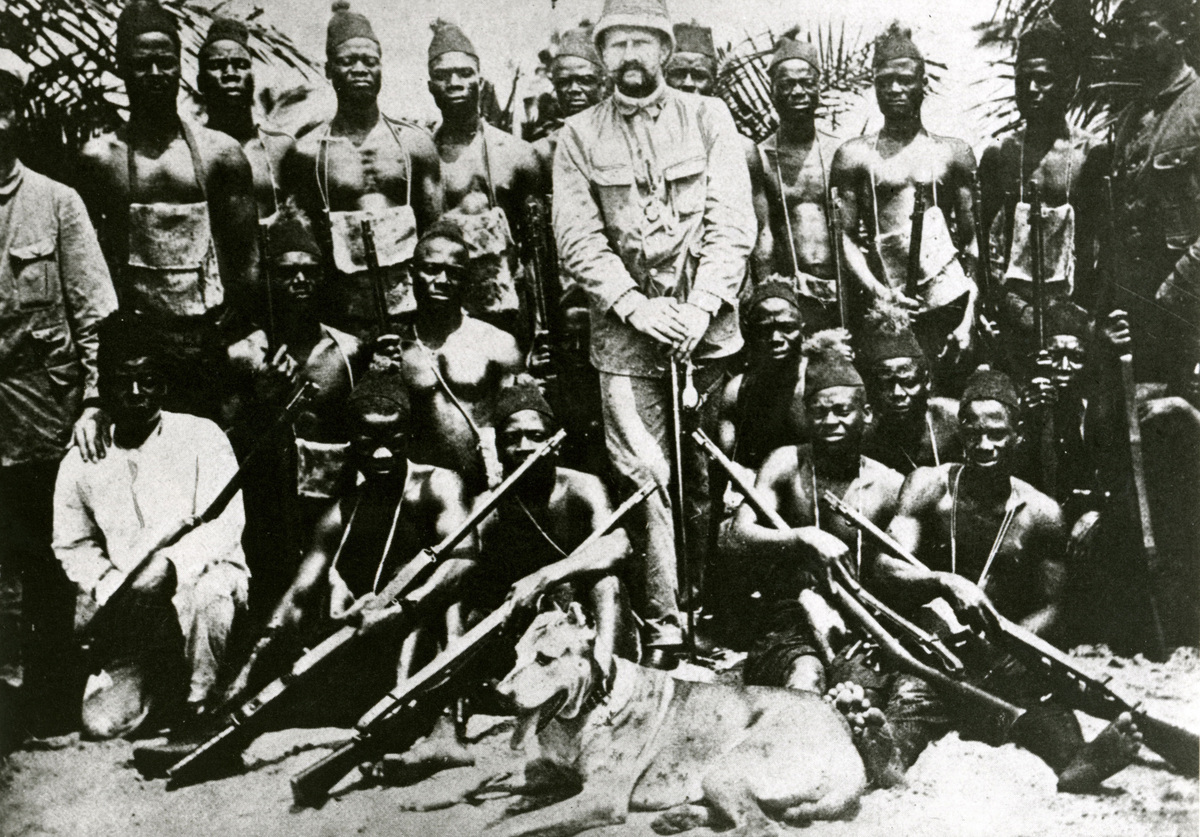Abstract
Taken in the 1890s, this photo shows West African mercenaries of the
German colonial police force with a German lieutenant, presumably Max
von Stetten. In October 1891, the German colonial administration in
Cameroon formed a police force of West African police soldiers to secure
colonial rule. However, the recruits did not come from the colony
itself, as the indigenous population there was not considered loyal.
Instead, Captain Karl von Gravenreuth, who was in charge of building up
the troops, had bought 370 enslaved men and women from various parts of
West Africa from the King of Dahomey, who were now to “pay off their
debt” in the colony through a form of indentured labor, including
service as police soldiers. In the following years, additional West
African men were recruited as mercenaries for the police force, while
the formerly enslaved continued to receive no pay and were subjected to
brutal treatment by their superiors. Formerly enslaved women were also
used for forced labor in agriculture and in the colonial masters’
households. Brutal mistreatment of the women eventually became the
trigger for an uprising of police soldiers in December 1893 (the
so-called Dahomey Uprising), which was put down with the help of the
German navy. The police force was disbanded and reestablished in 1895 as
a so-called Schutztruppe or
Protective Force. West African mercenaries were again recruited for the
new police force. When news of the mistreatment of West Africans that
had led to the Dahomey Uprising reached members of the Reichstag, it
caused the first colonial scandal of the Wilhelmine period.
